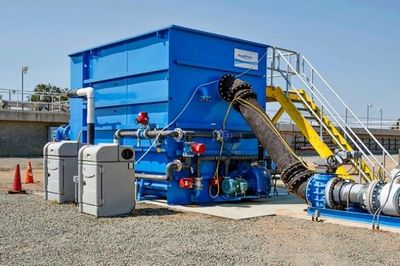Primary Filtration to Save Energy and Increase Treatment Performance
Dr. Caliskaner was the principal investigator and project manager of one of the largest and most comprehensive research and technology development projects for wastewater treatment. The projects focused on increasing carbon diversion to save energy and increase treatment performance and capacity at Water Resource Recovery Facilities (WRRF). This 3-year primary filtration deployment and technology development project was funded by the California Energy Commission with multiple sponsors from industry, academia, professional associations, and public utilities. The project includes filtration of raw wastewater before the secondary treatment to achieve significant energy savings while increasing the plant performance and capacity. Linda County Water District, City of Manteca, and Los Angeles County Sanitation District were the demonstration project sites with quite different characteristics in size and wastewater quality.
The cloth disk primary filter (CDPF) system (supplied by Aqua-Aerobic Systems, Inc.) was installed at Linda County Water District (Linda) WRRF and was operated approximately for 3 years between 2017 and 2020. The Linda WRRF is a tertiary level WRRF located in, Olivehurst, CA approximately 40 miles north of Sacramento. The primary filter system has treated between 20 and 50% of the total wastewater flow to the Linda WRRF.
Primary filtration is estimated to save an average of $1.6 million per million gallons per day of average WRRF flow capacity over a 30-year period. Following conclusions were drawn from this project with respect to observed treatment performance of the PF system compared to primary clarifier (PC) system:
- Total suspended solids (TSS) removal performance of CDPF was approximately 40 to 60 % higher compared to PC.
- Biological oxygen demand (BOD) removal with CDPF was approximately 30 to 50% higher compared to PC.
- Aeration power requirement in the downstream aerated activated sludge process was estimated to decrease by approximately 15 to 30%, depending on specific WRRF operating conditions. The corresponding capacity increase in secondary treatment processes is approximately 15 to 20%.
- The increase in biogas energy production has been estimated to be between 30 and 40%.
- Primary filter effluent particle size distribution was significantly improved compared to PC effluent.
- Footprint requirement is reduced by approximately 70% with PF as compared to PC.
- Effluent TSS concentration from the CDPF remained relatively constant as does the particle size distribution to be processed in the biological treatment process. With flow equalization, it would be possible to provide a constant TSS mass loading to further enhance the performance of the secondary treatment process.
